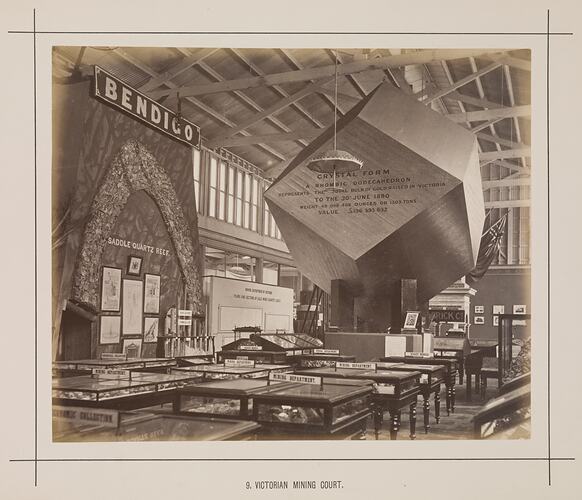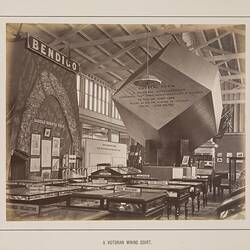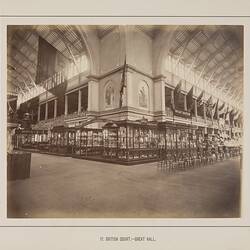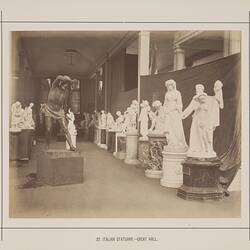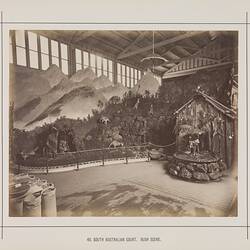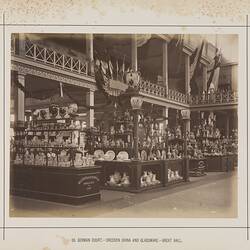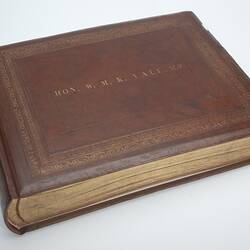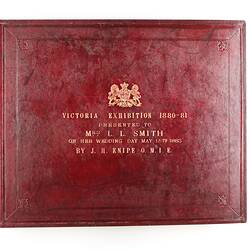Ludovico Wolfgang Hart was born in England in about 1836, the son of Charles Hart. While he developed a sufficient talent as an organist, a legacy of his music teacher and church organist father, Ludovico's talents were to lie in a very different field. He enlisted in the Royal Engineers for four years, but left in 1858 to pursue a career in photography.
Following his publication of an instruction book in 1857, Photography Simplified: A Practical Treatise on the Collodion and Albumen processes, upon leaving the army Hart readily found work in Paris with the established French photographic firm, Disderi et Cit. He returned to England in 1860, but moved back to Paris shortly afterwards, and in the decades that followed, Hart combined his passion for photography with prolific travel; first through Germany in his professional role with the Parisian firm of Numa Blanc and Co., and in 1865 on a tour of the Middle East.
In 1877, Hart arrived in Australia having been brought out by the New South Wales Government Printing Office to introduce new photographic techniques. In late 1879, he advertised in the Sydney Morning Herald that he was going in to partnership with Ferdinand Roux with the purpose 'of carrying on a Photographic Business generally and Photo-mechanical Printing Establishment'.
Possibly due to the rivalry between several Melbourne photographers vying for the contract to photograph the 1880 Melbourne International Exhibition, it appears the Exhibition Trustees looked interstate, to Sydney, and selected Hart to take the official court photographs of the Exhibition. An article published in the Australian Photographic Journal on 20 March 1896, explains that:
'He [Hart] settled in Melbourne in 1880, photographing the various courts of the Exhibition in that year, for the Commissioners, on 12 by 10 wet-plates, sixty in number'.
Museum Victoria holds three official photographic albums from the 1880 Melbourne International Exhibition, while other public institutions also hold similar copies. With the number of photographs included, and their dimensions, being consistent with those noted in the Australian Photographic Journal, it seems almost certain that Hart was the photographer responsible for producing these albums.
After the Exhibition, Hart remained in Melbourne, becoming the Instructor in Photography at the Working Men's College in 1888, and establishing the Melbourne Camera Club in 1891. Due to the slowing economic environment in the late 1880s, 'Ludovico Hart, of High-street, St. Kilda, photographer' was listed as insolvent due to a 'falling-off in business'. However, he continued as a commercial photographer throughout the 1890s, working from 42 Arnold Street in South Yarra, until his retirement in late 1900. In his final years, Hart settled in Hawaii where he died at Waimea in 1919.
References:'Printing Pictures', Sydney Morning Herald, Thur., 4 April 1878, p.6
'Business Announcements', Sydney Morning Herald, Wed., 31 March 1880, p.1
'The Fish River Caves', Maitland and Mercury Hunter River General Advertiser, Tues., 14 September 1880, p.4
'The Amateur Photographic Association of Victoria', Mercury and Weekly Courier, Sat., 5 July1884, p.3
'New Insolvents', Argus, Tues., 13 September 1887, p.6 Related Resources:
Melbourne Camera Club
Alan Frederick Elliott, Ludovico Wolfgang Hart, Dictionary of Australian Artists Online
More Information
-
Keywords
-
Authors
-
Article types
